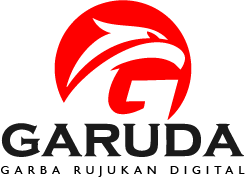Effect of Heating Temperature on Wear Rate, Tensile Strength, and Crystallinity of Cantula Fiber-Reinforced Magnesium/Hydroxyapatite/ Shellac for Bone Screw Material
Abstract
Bone screws are screws for bone that are joined to support plates. Bone screws
generally use metal as the primary material because of its high mechanical properties,
such as stainless steel and titanium. Currently, many biomaterials for bone screws are
being developed, which can be degraded by the body so that there is no need for
surgical removal of bone plates and screws. This study aimed to determine the effect
of heating temperature on tensile strength, wear rate, and crystallinity of the
magnesium/nano HA/shellac/cantala fiber bio-composite. This study used magnesium,
nano-hydroxyapatite, shellac, and cantala fiber materials mixed using a blender with a
volume ratio of magnesium/nano-HA-shellac/cantala fiber of 50/20/30, then
compacted with a pressure of 300 MPa for ten minutes. The heating process was carried out with variations in temperature of 100 °C, 120 °C, 140 °C and 160 °C for two hours. The results showed that the lowest wear rate was 0.72 x 10-3 mm3/Nm at a temperature variation of 160 °C. The highest tensile strength value was 6.58 MPa at 160 °C temperature variation. The highest degree of crystallinity, 74.15%, was obtained by observing X-ray diffraction (XRD) at a temperature variation of 160 °C.
Full Text:
PDFReferences
1. S. Jayasathyakawin, M. Ravichandran, N. Baskar, C. A. Chairman, and R. Balasundaram, “Magnesium matrix composite for biomedical applications through powder metallurgy – Review,” Mater. Today Proc., vol. 27, pp. 736-741, 2020.
2. L. Liu, K. Gebresellasie, B. Collins, H. Zhang, Z. Xu, J. Sankar, Y. C. Lee, and Y. Yun, “Degradation rates of pure zinc, magnesium, and magnesium alloys measured by volume loss, mass loss, and hydrogen evolution,” Appl. Sci., vol. 8, no. 9, article no. 1459, 2018.
3. M. I. Mamungkas, M. A. Choiron, and W. Suprapto, “Simulasi Komputer Pada Optimasi Desain Hybrid Plating Dalam Proses Bone Healing,” Jurnal Rekayasa Mesin, vol. 5, no. 3, pp. 247-252, 2014. (in Indonesian).
4. P. Fernandes Santos, M. Niinomi, H. Liu, K. Cho, M. Nakai, A. Trenggono, S. Champagne, H. Hermawan, and T. Narushima, “Improvement of microstructure, mechanical and corrosion properties of biomedical Ti-Mn alloys by Mo addition,” Mater. Des., vol. 110, pp. 414-424, 2016.
5. F. Witte, N. Hort, C. Vogt, S. Cohen, K. U. Kainer, R. Willumeit, and F. Feyerabend, "Degradable biomaterials based on magnesium corrosion", Curr. Opin. Solid State Mater. Sci., vol. 12, no. 5-6. pp. 63-72, 2008.
6. H. Ivankovic, S. Orlic, D. Kranzelic, and E. Tkalcec, “Highly Porous Hydroxyapatite Ceramics for Engineering Applicatios,” Adv. Sci. Tech., vol. 63, pp. 408-413, 2010.
7. F. Rumengan, I. Raya, and Maming, Sintesis dan Karakterisasi Hidroksiapatit [Ca10(PO4)6(OH)2] Dari Batu Kapur Menggunakan Metode Sol Gel, Makassar: Universitas Hasanuddin, 2014. (in Indonesian).
8. W. W. Raharjo, D. A. Himawanto, R. Fitriyani, and K. I. Purnama, “Sifat Tarik dan Lentur Komposit rHDPE/Serat Cantula dengan Variasi Panjang Serat,” in Seminar Nasional Tahunan Teknik Mesin XIV (SBTTM XIV), Banjaramasin, Indonesia, 2015. (in Indonesian).
9. T. F. Scientific, Safety Data Sheet. California: American Elements, 2012.
10. S. Dasgupta, S. Tarafder, A. Bandyopadhyay, and S. Bose, “Effect of grain size on mechanical, surface and biological properties of microwave sintered hydroxyapatite,” Mater. Sci. Eng. C, vol. 33, no. 5, pp. 2846-2854, 2013.
11. W. W. Rahardjo, E. Pujiyanto, B. A. Saputro, A. Majid, and J. Triyono, “Agave Cantula fiber-reinforced biocomposites of hydroxyapatite/shellac as a dental material,” J. Nat. Fibers, vol. 19, no. 16, pp. 13012-13024, 2022.
12. A. Azouka, R. Huggett, and A. Harrison, “The production of shellac and its general and dental uses: a review,” J. Oral Rehabil., vol. 20, no. 4, pp. 393-400, 1993.
13. C. Prakash, H. K. Kansal, B. S. Pabla, S. Puri, and A. Aggarwal, “Electric discharge machining - A potential choice for surface modification of metallic implants for orthopedic applications: A review,” Proc. Inst. Mech. Eng. Part B J. Eng. Manuf., vol. 230, no. 2, pp. 331-353, 2016.
14. W. N. A. W. Muhammad, Z. Sajuri, Y. Mutoh, and Y. Miyashita, “Microstructure and mechanical properties of magnesium composites prepared by spark plasma sintering technology,” J. Alloys Compd., vol. 509, no. 20, pp. 6021-6029, 2011.
15. Balgies, S. U. Dewi, and K. Dahlan, “Sintesis dan Karakterisasi Hidroksiapatit Menggunakan Analisis X-Ray Diffraction” Jurnal Neutron., vol. 8, no. 1, pp. 10-13, 2011. (in Indonesian).
16. L. H. Saputri and D. Budhijanto, “Polyesterification of Shellac as An Alternative Coating Material,” in Seminar Nasional Teknik Kimia “Kejuangan”, Yogyakarta, Indonesia, 2016.
17. E. F. Purnama, S. Nikmatin, and R. Langenati, “Pengaruh Suhu Reaksi Terhadap Derajat Kristalinitas Dan Komposisi Hidroksiapatit Dibuat Dengan Media Air Dan Cairan Tubuh Buatan (Synthetic Body Fluid),” Jurnal Sains Materi Indonesia, vol. Special Edition: October, pp. 154-159, 2006. (in Indonesian).
Refbacks
- There are currently no refbacks.








